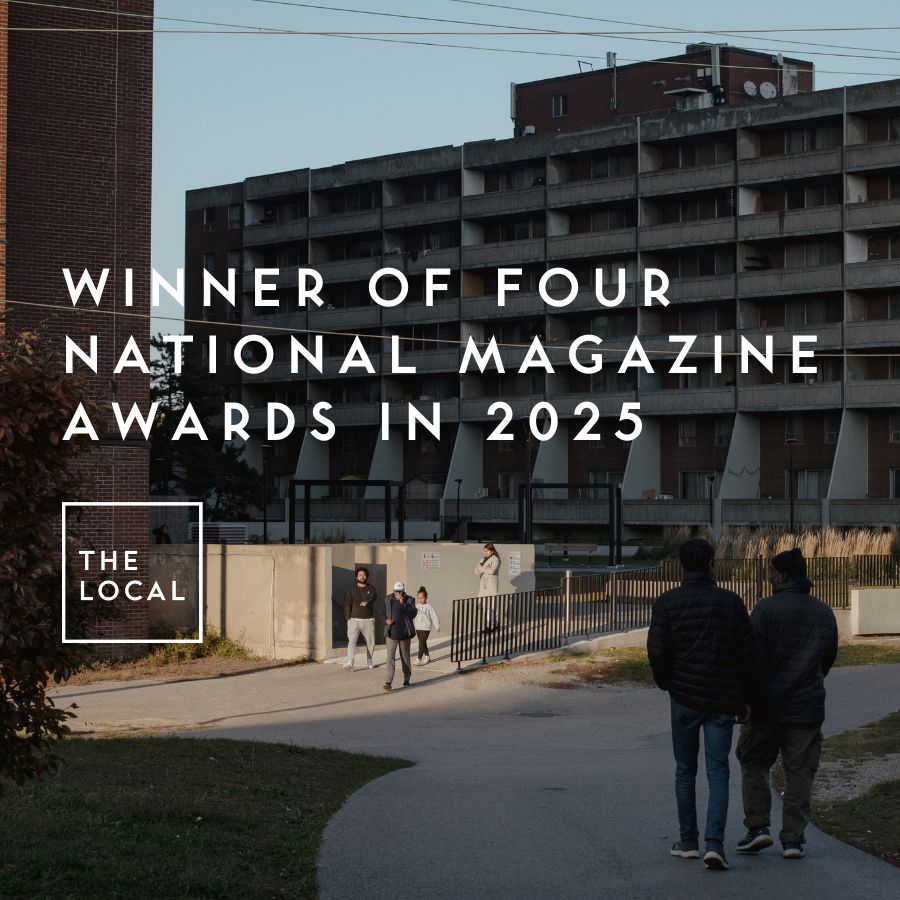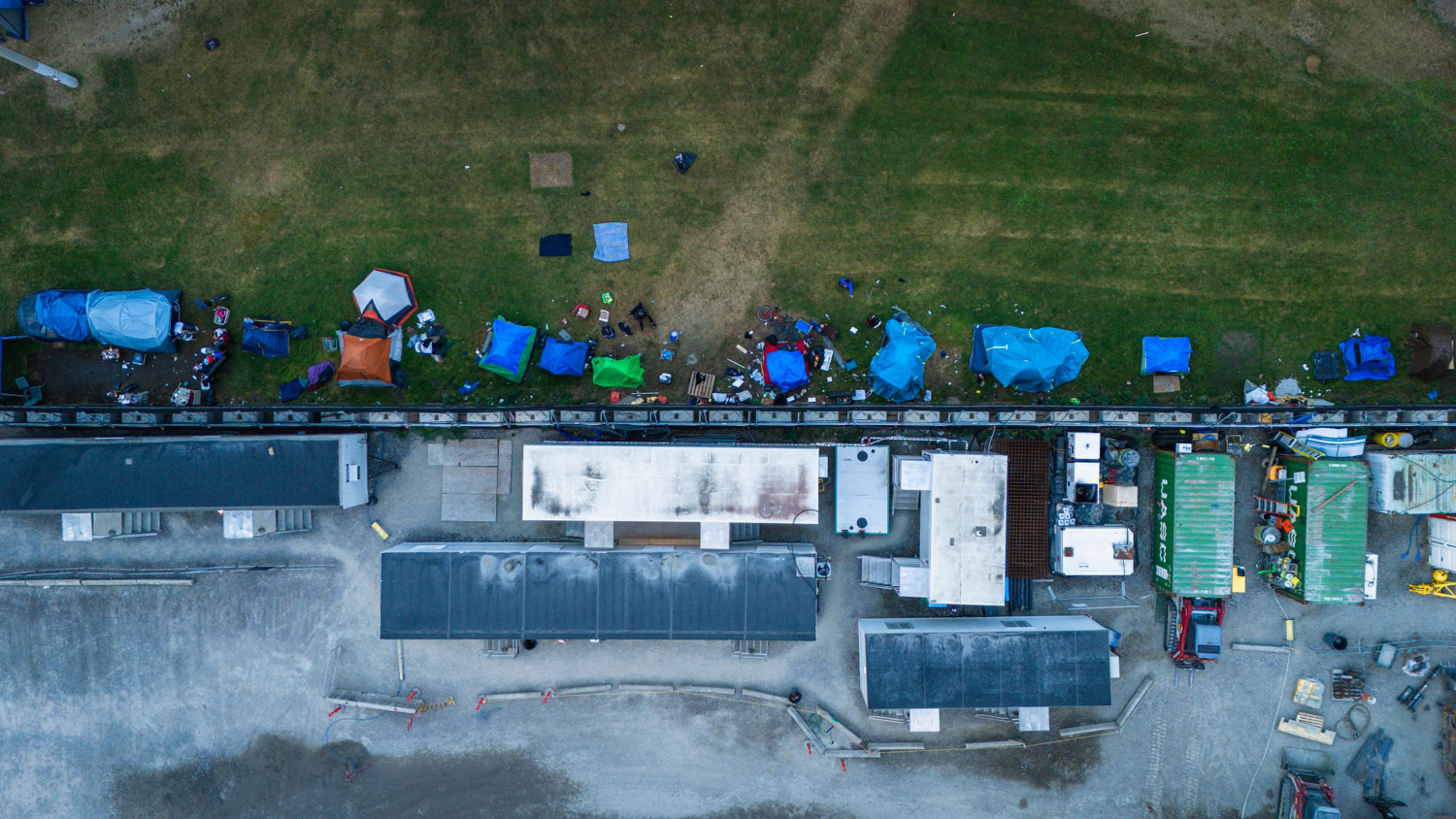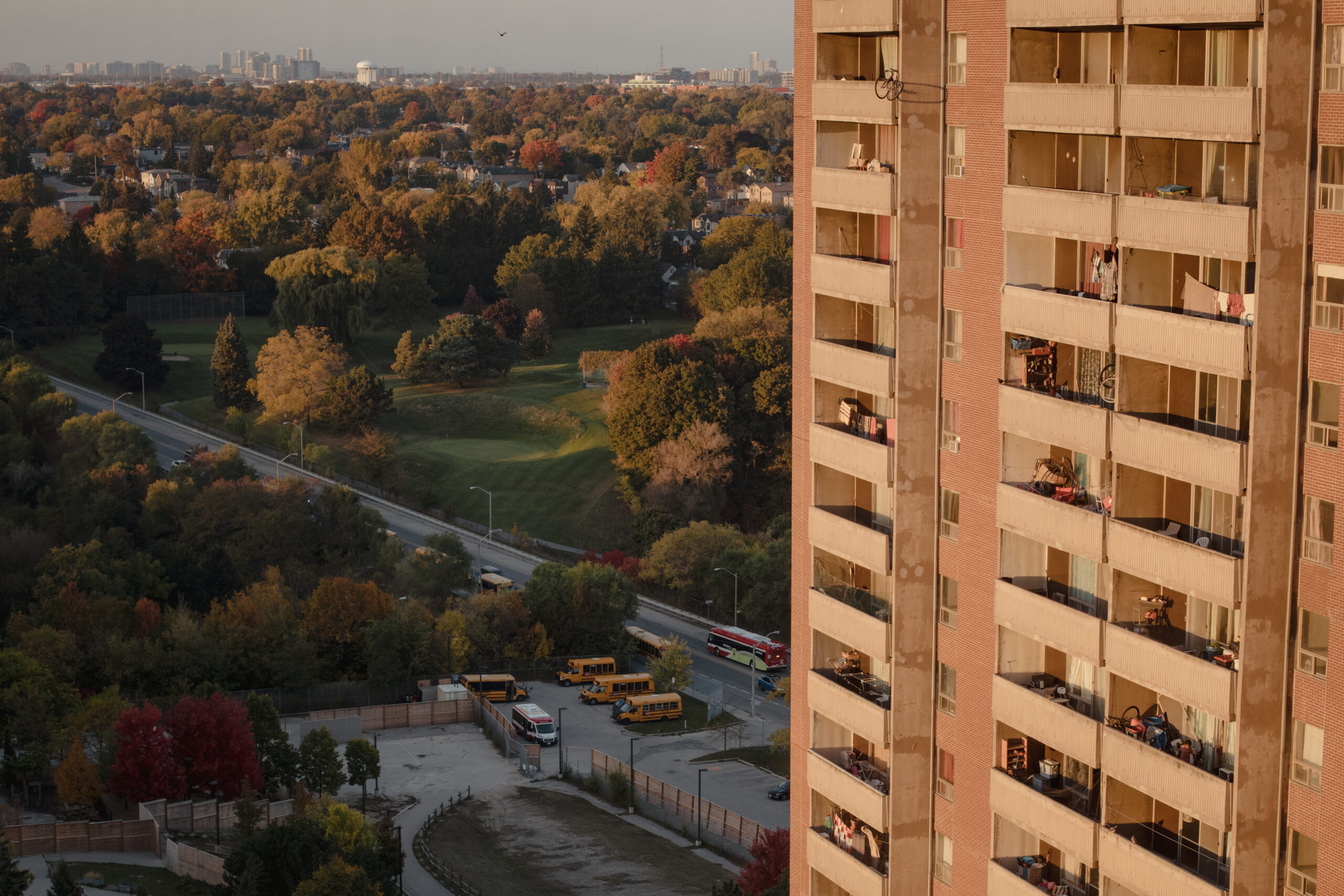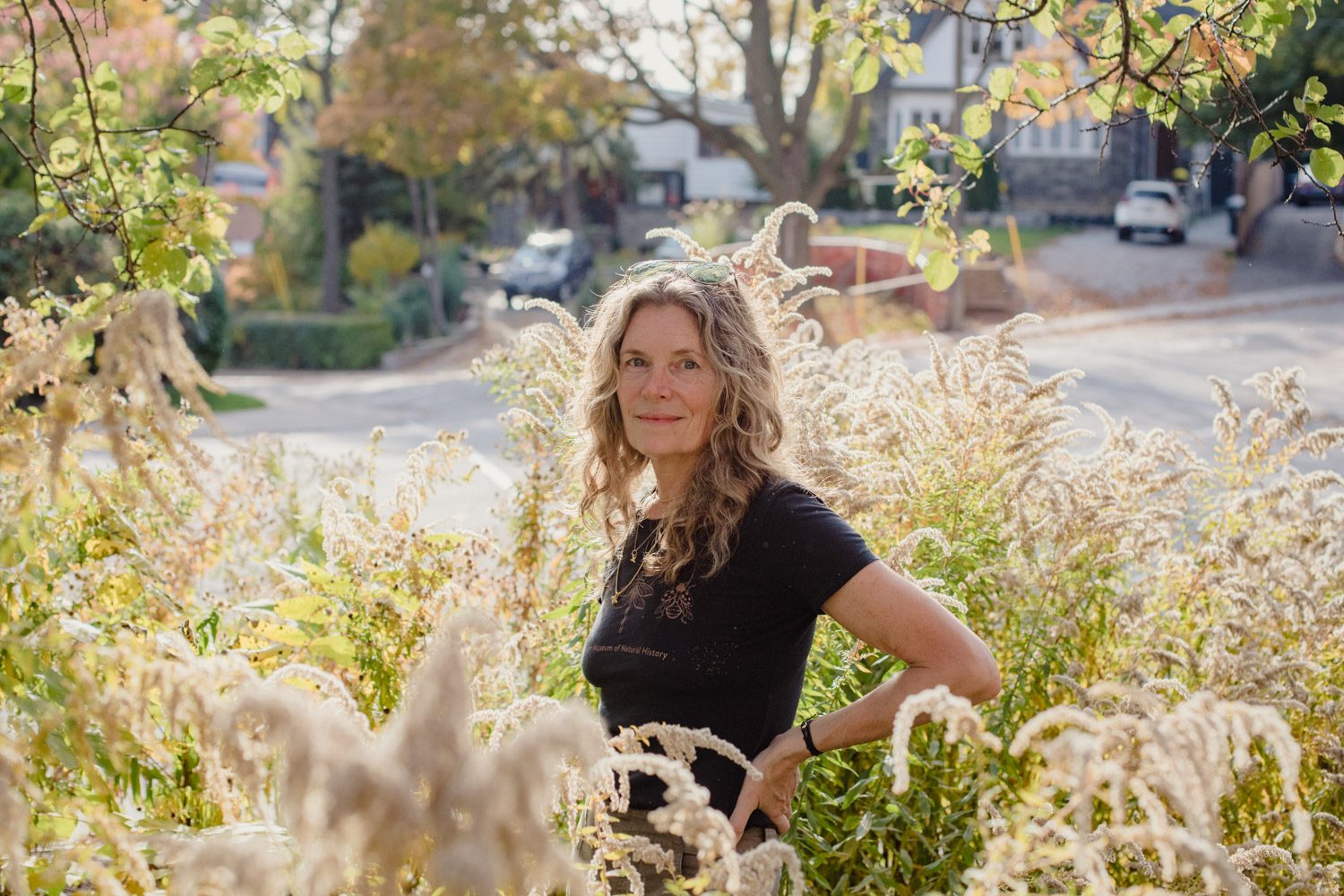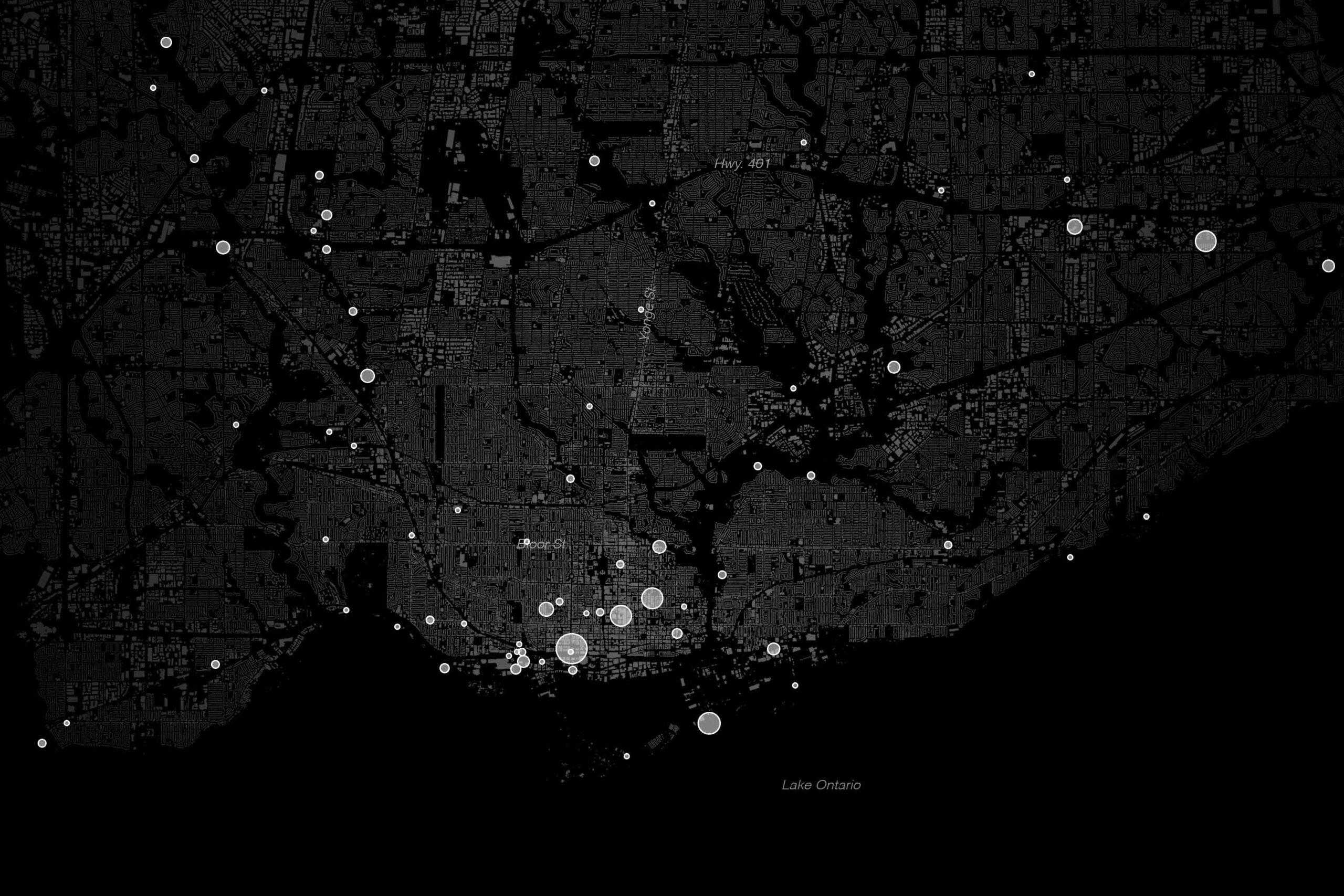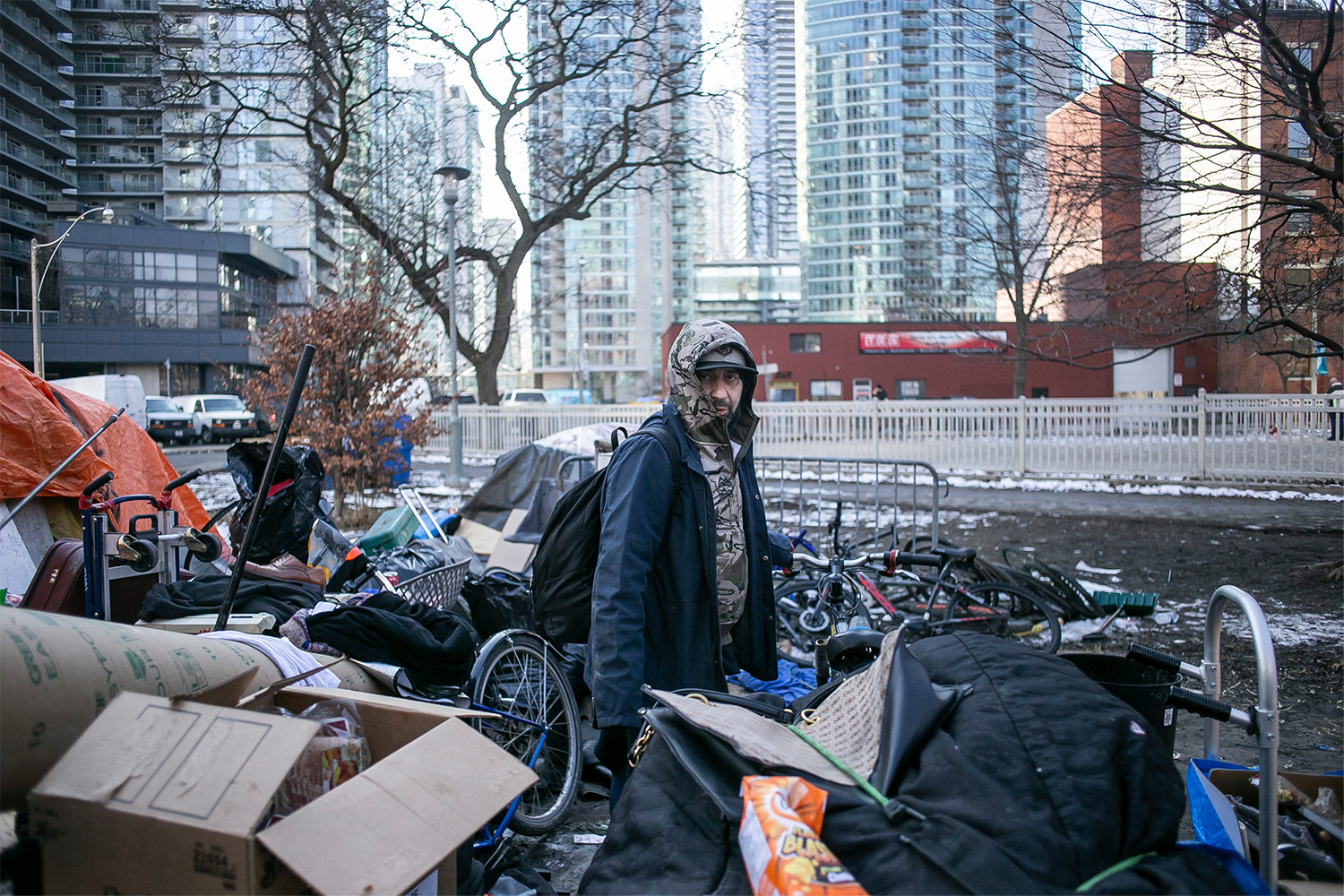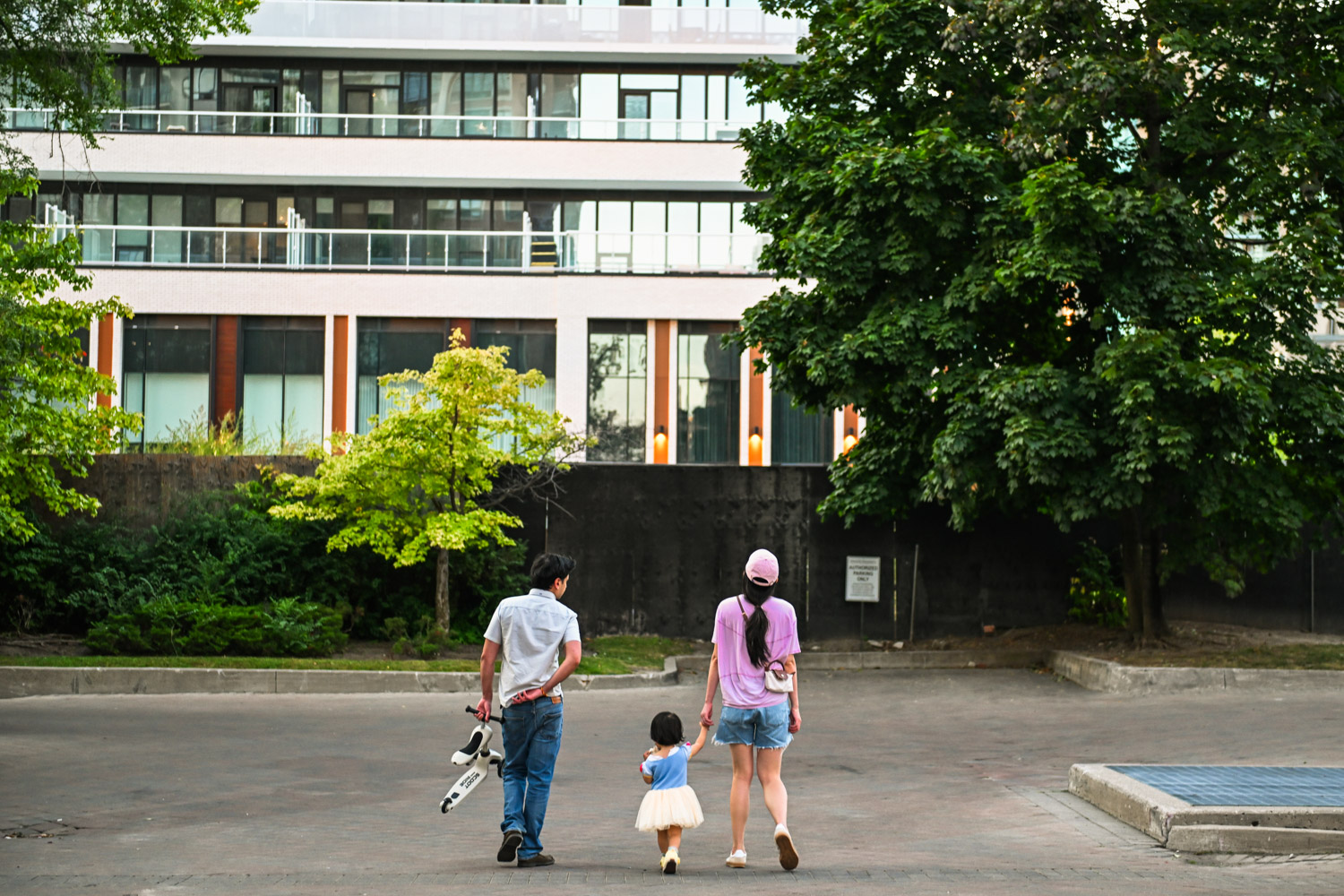These days, Sarah Ovens can’t seem to stop taking photos. It’s become a kind of compulsion for the case manager at All Saints Church and Community Centre, a homeless drop-in at Sherbourne and Dundas Streets in the heart of Toronto’s Moss Park neighbourhood. In the midst of a peaceful moment—while community members are doing an art activity or enjoying a barbecue, happy and smiling—a dark thought will suddenly creep in and Ovens will reach for her phone. “So many times the thought has occurred to me that I will end up using some of these pictures for somebody’s memorial,” she says.
Ovens has had to host memorials without a picture of the deceased before—has had to try to honour someone without being able to provide the basic dignity of sharing their image as well as their name—and she never wants to do that again. So now she takes photos.
Ten years into her job, death has become a routine part of her work. “I have the number for the guy in the morgue at St. Mike’s,” she says. “I know where to call if we haven’t seen somebody in a while.”
If she knows the person’s biological family, she contacts them first and gives them the news. On the day of a memorial itself, Ovens just tries to make the drop-in feel special—“to make it nicer than a normal day.” She puts out the good coffee, the good tea, the good cookies if they have them. She makes room for community members to speak and mourn.
The church that houses All Saints is a beautiful space—all vaulted ceilings and stained glass windows—and her aim is to create a moment of dignity in death for people who are rarely given that grace in life. “It’s what you would do for anyone’s memorial,” she says. “To honour people and show that these are people. They’re not disposable. They’re not trash. They get treated like trash in a lot of ways. But they’re not trash.”

Death happens everywhere and it happens to everyone but it happens to younger people in Moss Park than anywhere else in the city. Analysis by The Local, in collaboration with researchers from MAP Centre for Urban Health Solutions at St. Michael’s Hospital, found that residents of the downtown eastside neighbourhood have the shortest life expectancy at birth of any neighbourhood in the city. The analysis is the first ever neighbourhood-level look at life expectancy at birth in Toronto, and the disparities are stark. Life expectancy in Moss Park is 74.8 years, a full year younger than the next lowest neighbourhood and well below the city-wide average of 80.9. In Yonge-Doris, a thin strip of condominiums in North York, that number is 86.2.(Read more about The Local’s life expectancy analysis)
A 12-year gap between Toronto neighbourhoods may not feel dramatic, but in life expectancy terms it is a chasm. People at Yonge-Doris enjoy a better life expectancy than people in Japan. In Moss Park, the numbers are comparable to Iran and slightly below Bosnia and Herzegovina.
The nature of a statistical average means that high mortality among young people has an outsized effect on overall life expectancy. Those missing years, then, don’t just mean people in Moss Park die in their 70s rather than their 80s. They represent Torontonians who have had their lives cut short well before their time—in their 60s, their 40s, their 20s. They represent countless memorials like the ones Ovens has organized at All Saints, where people gather to mourn more often than they do in any other neighbourhood in the city.
There is no single cause of lower life expectancy, but countless studies have recognized the role that poverty plays in premature death. And in Moss Park, the median household income in 2021 was just $65,000, eleventh lowest of the city’s 158 neighbourhoods.
“The neighbourhood has been described as in crisis for at least 50 years, if not longer,” says David Roberts, a Moss Park resident and director of the urban studies program at the University of Toronto. “Part of that has to do with the historical economic role that the neighbourhood played in the city.”
The L-shaped neighbourhood on the downtown eastside of Toronto stretches from Carlton to Front Streets from north to south, and from Jarvis to Parliament Streets from east to west, before jutting all the way out to the Don River in its southern segment. That part of the neighbourhood was once a manufacturing centre, and in the early 1900s homes were constructed to house the single men needed to work in the factories. In the early 1960s, following the pattern of “slum clearances” happening across the continent, the buildings north of Queen East at Parliament were razed and replaced with the Moss Park Apartments, a massive public housing project. Today, the three apartment towers loom over the neighbourhood, part of a dense collection of social housing run by Toronto Community Housing that includes a row of battered Victorian houses along Sherbourne Street.

The presence of so many people living in poverty in such a small area—just four short stops on the 501 Queen streetcar—has, over the years, brought a collection of social service agencies to support them, with homeless shelters, drop-in centres, and health clinics clustered across a few downtown blocks.
“We have this concentration of services in part because of the historical poverty that has existed in the neighbourhood,” says Roberts. “But it also acts as a draw.” If other neighbourhoods reject social housing, never mind homeless shelters, then the people who need a meal or a warm place to go will make their way to Moss Park. “There is a particular kind of function that the neighbourhood plays,” says Roberts. “People have to go somewhere, and this is one place that they can access some services.”

Angie Hocking, a member of the community-led Moss Park Coalition and a minister in neighbouring Regent Park, has been working with people experiencing poverty for 17 years. She sees the way it grinds people down. “Almost everyone I know who is poor is making constant choices that put their health as the last priority, because they just don’t have the luxury of putting it above anything else,” she says.
For the working poor, that might mean choosing between keeping a doctor’s appointment or missing a day of work. For the people in encampments, Hocking says, that can mean choosing between getting a good night’s sleep but possibly losing their possessions to thieves, or staying awake in a state of readiness. She knows people who start using stimulants because staying alert and walking all night feels like the safest option. “Drug use is often tied to the basic need of having to stay awake,” says Hocking.
The health consequences of those choices over time are easy to see. Bodies break down. People whose mental state was fine when she first met them are now, after years on the street, clearly suffering psychosis. “The cost of being poor is quite literally life-threatening,” she says.
More than poverty, it’s being homeless, specifically, that is tied to early mortality. “My research has shown that people experiencing homelessness have remarkably low life expectancies,” says Dr. Stephen Hwang. The physician and researcher is the director of MAP Centre for Urban Health Solutions at St. Michael’s Hospital (though he wasn’t directly involved in our life expectancy analysis) and also runs a weekly clinic out of Seaton House men’s shelter in Moss Park. In a 2009 study, Hwang found people who were homeless or marginally housed were at greater risk of dying at a younger age than if they experienced poverty alone. Those living in shelters, rooming houses, or hotels had much shorter life expectancies than those categorized as having the lowest income, with homeless and marginally housed men having only a 30 percent chance of surviving until 75.
Those dismal results are both a reflection of who is at greatest risk of being homeless, and what happens once they find themselves on the streets. “I view it as a vicious cycle,” says Hwang. “People who are among the most marginalized and disadvantaged become homeless, and then homelessness sets them back even further.”

In addition to homelessness, in recent years the neighbourhood has suffered through the twin epidemics of COVID, with its attendant lockdowns and displacements, and the toxic drug crisis. Both have devastated Moss Park. In 2021, one of the years captured by The Local’s life expectancy data, there were 592 opioid toxicity deaths in Toronto, according to Toronto Public Health. Of those deaths, 102 were in the downtown catchment that includes Moss Park. Toronto paramedic data tracking calls for suspected opioid overdoses from July 2023 to June 2024 found that the two neighbourhoods with the most calls were Moss Park and Downtown Yonge East, directly to its west, with 648 and 743 calls respectively. No other neighbourhood had more than 220.
Both homelessness and the overdose crisis disproportionately affect men. In the City’s 2021 Street Needs Assessment, 80 percent of outdoor respondents were male, and almost 80 percent of people who died from accidental opioid overdoses in 2022 were men. That’s reflected in Moss Park’s male life expectancy rate, which is a dismal 71.8 years.
“It’s heartbreaking,” says Sarah Greig, the director of substance use and mental health at South Riverdale Community Health Centre. “Over the past years, essentially watching a community die away—it’s heartbreaking.”
In 2017, in response to the crisis that was devastating the community, Greig was one of several volunteers who opened the Moss Park Overdose Prevention Site in a tent in a park, the first unsanctioned safe consumption site in the city. A year later, the site was granted an exemption by Health Canada, given provincial government funding, and moved indoors. Today, in an unassuming building on Sherbourne Street, health care workers at the Moss Park Consumption and Treatment Service (CTS) provide overdose response while connecting clients with broader health and social services.

This August, Doug Ford’s provincial Conservatives announced a policy that will ban supervised consumption sites within 200 metres of a school or child-care centre after March 31, 2025, which will force five sites across the city to shutter. The Moss Park CTS is not near a school. But the building that houses it is being redeveloped into a condominium, and a provincial moratorium on any new supervised consumption sites means that once they’re evicted, they will have nowhere to go.
That reality hung over my conversations in Moss Park. As bad as the life expectancy numbers are in the neighbourhood, it’s clear that they could be significantly worse. Between 2020 and July 2024 Moss Park CTS staff reversed 2,931 overdoses at their location and in the community. A recent study in medical journal The Lancet, led by researchers from the Centre on Drug Policy Evaluation at St. Michael’s Hospital, found that overdose deaths decreased by 67 percent in Toronto neighbourhoods within 500 metres of a CTS, with no significant change found in neighbourhoods that did not host one.
“It feels like we’re going backwards in time,” says Greig. To her, the decision seemed so divorced from the reality of the crisis she was experiencing each day that it was difficult to comprehend. The people who use drugs at the Moss Park CTS will not disappear when it closes. They’ll just move on to less safe spaces—to apartment buildings and stairwells and Tim Hortons’ bathrooms.
Moss Park is a neighbourhood in desperate need of more life-saving interventions. Instead they are losing one. “I think the whole community is actually in shock and experiencing anticipatory grief,” says Greig.

On a warm Thursday this September, the line-up for food at the All Saints barbecue stretched through the parking lot and out onto Sherbourne Street. The event had a festival atmosphere, with people enjoying burgers and ginger ales on outdoor tables as the sound of 90s R’n’B thumped through the speakers.
Sarah Ovens briskly worked the grill, red hair pulled back from her face, flipping burgers and slotting them onto fluffy white buns.
Janice Bellmore sat in her walker at one of the tables beneath an umbrella, chatting with friends. The 60-year-old has been living in the neighbourhood for decades. She’s part of the homeless union and the housing advisory committee at Street Health, and to her, it was clear what the community needed. “We need more housing and more drop-in centres,” she said flatly. Like so many residents, she, too, was dealing with loss, thinking about a friend named Randy who had died recently of liver cancer. “He was a good fella,” she said sadly.
The Local’s life expectancy data captures a specific moment in time, from 2020 to 2021. But ask people in Moss Park how the neighbourhood has changed in the years since, and just about everyone—from residents to the neighbourhood crossing guard to real estate agents trying to sell homes in the area—will tell you the same thing. The neighbourhood has gotten markedly, obviously, heartbreakingly worse.
I first spoke with Ovens about life in Moss Park a little over five years ago. Back then, she was dismayed at what she was seeing. The shelters were overcrowded. People were desperate. Now she looks back at that period as a time of relative prosperity. “Every kind of hard time that people can be having has become more severe, more intractable.”
The meal program All Saints runs has expanded by about 200 percent in recent years, she estimates. “We start serving lunch, and we’re out of meals 10 minutes later, every single day.” And the people in line aren’t just homeless. They’re students, families, the working poor—all sorts of people struggling to get the basic nutrition and calories needed to survive.
Five years ago, Ovens spent much of her time on the phone with the City’s central intake, desperately trying to find shelter beds for clients in what seemed, back then, like a dysfunctional system without enough capacity. Today it is utterly broken. Each night this August, according to data from central intake, the City turned away an average of 233 people who called looking for a bed—a number that is almost certainly just a fraction of the actual need. “We don’t even call anymore, because we know there’s no point,” says Ovens. “I haven’t gotten somebody a shelter bed probably in six months.”
Night by night, year by year, those deprivations and social failures add up. And they are expressed, most bluntly and irrevocably, as lost years on a map of life expectancy—as death.
For Ovens, the thing that bothers her most is that she can feel herself becoming numb to all those losses. “I don’t feel each death as much as I used to,” she says. She begins to cry. “When I think back to ten years ago, eight years ago, how I used to feel each one… Now I feel like it’s kind of, I don’t know, compartmentalized.”

From a demographic stand-point, you can imagine a future in which Moss Park’s life expectancy improves and the neighbourhood rises to approach the Toronto average. It is possible, after all, to change the conditions here for the better—to invest in deeply affordable and supportive housing, to fund both life-saving safe consumption sites and mental health care, to make sure that disabled people on government support are given enough to actually survive, to strengthen a community that’s been beaten up for decades. In the centre of a wealthy city in one of the wealthiest countries in the history of the world, these are not outrageous fantasies; they’re choices we’ve decided not to make.
The other route to a city-average life expectancy is less inspiring, but perhaps more likely. Moss Park is a small, poor neighbourhood in the centre of a booming city. The area’s shelters and service agencies are unlikely to move anytime soon, but the neighbourhood is already changing fast. Condominiums are popping up. Whole blocks have been boarded up, with construction hoarding announcing the “future home of an Ontario Line station.” Towers that traditionally housed low-income renters have been transformed with a paint job and the euphemistic promise that they’re “reshaping vintage rental communities into modern gems.”
It is not difficult to imagine a future in which that process continues and accelerates—a future in which landlords push out low-income tenants, rooming houses disappear, encampments are bulldozed, and instead of being supported, the people of Moss Park are simply disbursed, taking their difficulties and traumas and statistically early deaths to less desirable real estate.

That September afternoon in Moss Park, however, neither future felt particularly imminent. At Saint Luke’s United Church, on the northern border of the neighbourhood at Carlton Street, the line-up for the food bank snaked around the block. Across the street, music wafted over from the encampment in Allan Gardens, an ever-shifting configuration of tents that is now a permanent fixture in the city’s geography. At the other end of the neighbourhood, at Queen and Parliament, a line for lunch was starting up at Toronto Council Fire Native Cultural Centre. The neighbourhood was a place in which people were in desperate need. It was also, despite huge obstacles, a neighbourhood in which people were coming together to try to help one another.
At the All Saints barbecue, Nikki Jones sat down, joining Janice Bellmore at the table. The 64-year-old in a frayed jean-jacket lived in Allan Gardens decades ago and could recount the local history like it was her own. She was living in an apartment around the corner now—a grandmother of four—and that evening she was volunteering at Street Health, leading a women’s group.
They were joined by Sophia Smith, a 44-year-old originally from Jamaica with an infectious laugh who lives in nearby Regent Park. She has epilepsy, she said, “but I don’t want to sit around and do nothing.” And so she was volunteering too, leading beading workshops at various drop-ins, the colourful evidence of her work visible on wrists throughout the crowd.
That was the thing about Moss Park, Bellmore insisted. Wherever she went, she saw the same thing. “I see everybody helping each other out,” she said. “I love this community.”
Bellmore got up and steadied herself on her walker, calling goodbye to the others at the table. People were finishing their plates, content to sit and soak in one of the last warm days of the summer.
Sarah Ovens was still at the grill, but the line had dwindled. For all the neighbourhood’s difficulties and traumas, this had been a good day. It was the kind of day you’d want to capture in a photograph.
With files from Tai Huynh.
